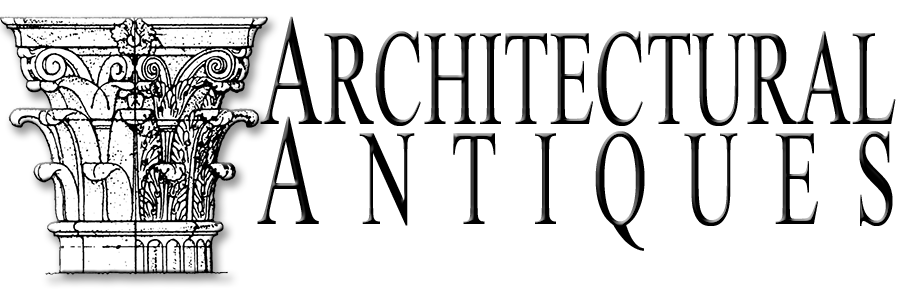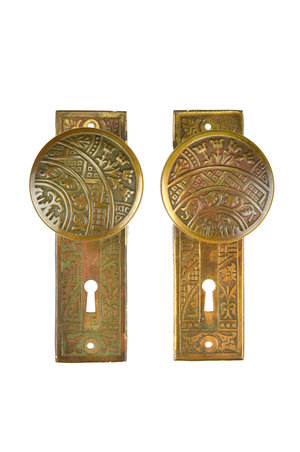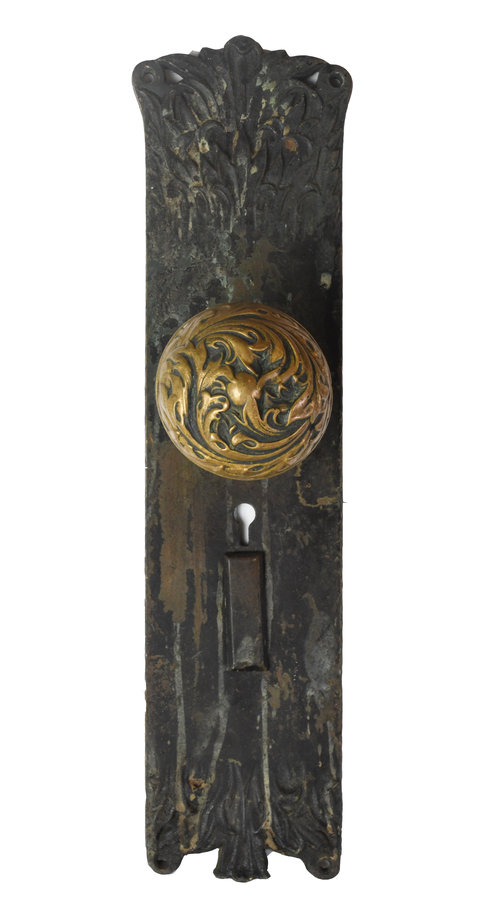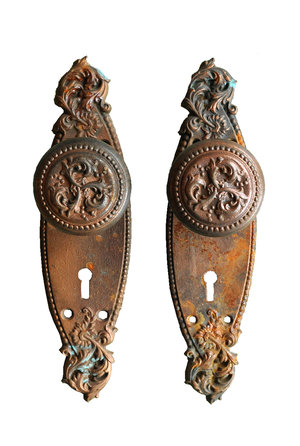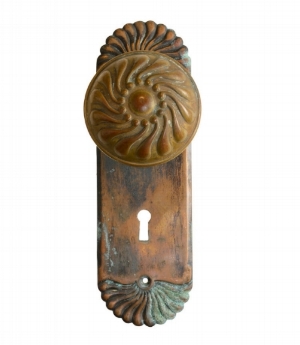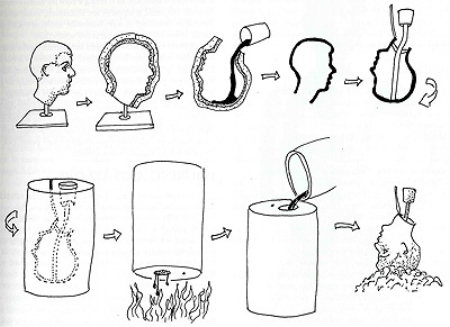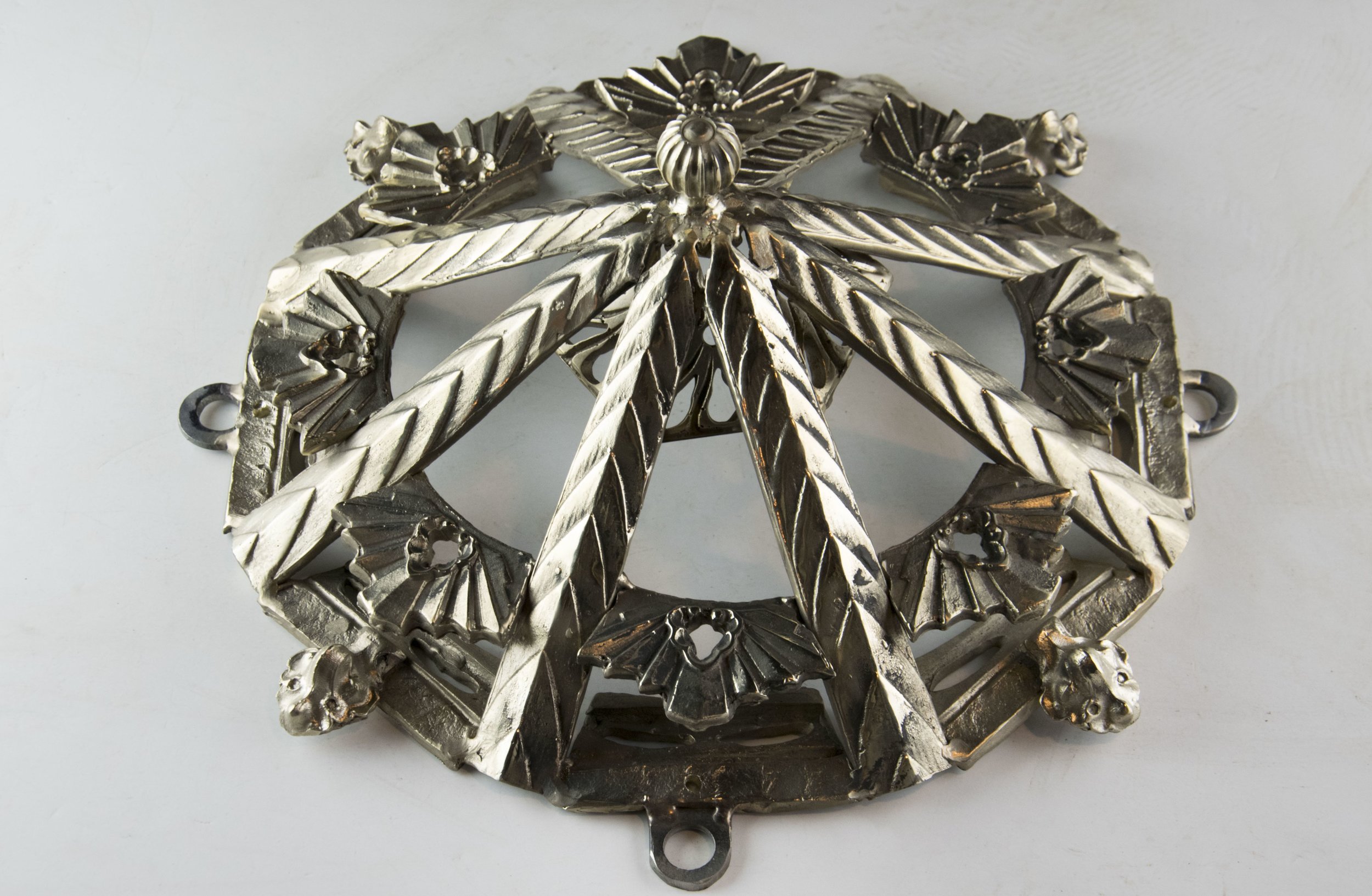Bronze and Brass and Iron...Oh My!
/If you've taken a look through our inventory, or even just follow us on social media, you've probably noticed that we have a lot of doorknobs.
They come in styles like "Bramante," "Montello," and "Cairo," are defined by schools like Classic, Italian Renaissance, and Vernacular, and were manufactured by historic companies like Russell & Erwin, Reading, and Yale & Towne. We try to identify all of these pieces of information as we sort through our inventory, and do most of our research on antiquedoorknobs.us. It is a treasure trove of information, and a wonderful resource if you are looking to research the doorknobs in your own home!
Another crucial piece of information we look at is the type of metal. Most cast doorknobs are made of brass, bronze, or iron, although steel is sometimes used as well. You can usually identify the metal by the patina, or tarnish caused by oxidation, and whether or not it is magnetic. Brass and bronze are not magnetic and can develop a greenish patina, which you can see at the bottom of this plate:
Iron and steel are magnetic, and develop a reddish patina, as seen peeking through this bronze-plated cast iron doorknob set:
These beautiful and detailed pieces of hardware are created with a process known as metal casting, which is actually one of the oldest forms of manufacturing at more than 5,000 years old! Scholars believe that metal smiths in ancient Mesopotamia (modern-day Syria and Iraq) were the first to use casting between 4000-3000 BCE, since the Sumerians in southern Mesopotamia were the first civilization to add tin to copper to make bronze tools and weapons, ushering in the Bronze Age. The oldest known casting is a copper frog cast from a grave in the ancient city of Kish around 3200 BCE:
Copper frog cast from 3200 BCE Mesopotamia
At this time, bronze was usually cast in permanent stone molds for large items, but ornaments and jewelry show an early use of lost wax, or investment, casting. The lost wax process has remained essentially the same since 2000 BCE:
Lost wax casting
- An original model of the product is sculpted out of clay, wax, or another moldable substance.
- A negative mold made of silicon rubber or latex is created around the original, often held in shape by a jacket of plaster or fiberglass.
- Wax is poured into the mold to coat the interior, creating a positive mold of the product. At this point, sprues are attached to provide a path for bronze to flow and air to escape later on in the process.
- The positive wax model and sprues are coated with several layers of ceramic and grit, then baked to burn out the wax. This is the "lost wax" part, although sometimes the melted wax can be collected and used again.
- The negative space in the ceramic is filled with molten bronze and allowed to cool. Then, the ceramic shell is chipped and sandblasted away to reveal the final model, and the sprues are cut off.
- The final model is welded together if cast in pieces, and chased to recreate the surface detail and remove signs of the casting process.
- The last step is patination, where chemicals are applied to the surface to protect the metal and create a beautiful finish.
Sand casting
Brass, an alloy of copper and zinc, was developed many centuries BCE, but the exact date and location are still unknown. Brass products can be cast using die casting, where molten brass is forced into reusable molds, or sand casting, using either green sand molding or air set molding. Green sand molding uses a blend of silica sand, clay, water, and other additives to create a "wet" or "green" sand mold, into which the brass is poured. Air set molding mixes dry sand, silica sand, and additives with an adhesive that allows it to air set quickly, often resulting in a two-part mold.
Casting at Architectural Antiques
We recently had the pleasure of collaborating with Brian F. Leo, a local artisan specializing in custom hardware, architectural ornaments, and cast-metal specialties. We had received an interesting pendant light fixture in the Art Deco style, but quickly realized that the bottom bowl was missing. Brian used a collection of Art Deco parts he had, along with a plaster mold of an overlapping pointed arch pattern on the original light, to cast a new brass bowl!
Beautifully detailed bowl
The overlapping pointed arch design modeled after an original part of the pendant
